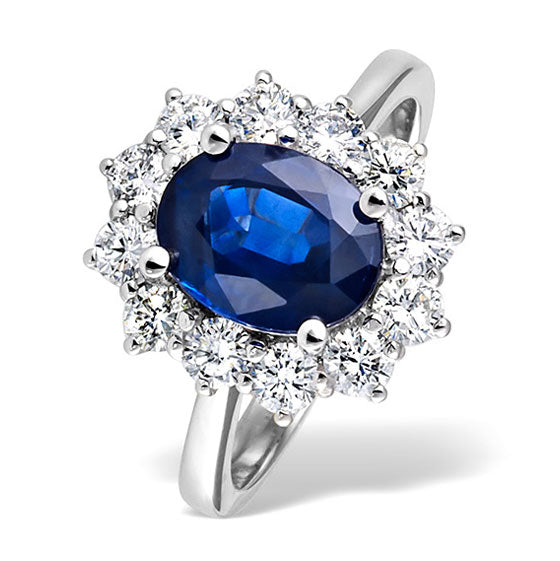Library Of Gemstones
Caring For Your Gemstones
While most gemstones, appear to be unbreakable, they are still likely to be damaged with improper wear and care. Stones like Amethyst, Emerald and Tanzanite can be easily scratched, chipped or shattered with hard knocks and excessive changes in temperature. Emeralds can have an oily appearance, and care should be taken when cleaning to not remove this surface treatment. Most stones can be cleaned using warm water, gentle detergents and a soft toothbrush. Ensure that the stone is rinsed well and can be dried with a soft cloth. Avoid harsh chemicals with gemstones as they can alter the colour of some and effect the durability of others. When storing gemstone jewellery it is recommended to keep with either in individual soft fabric pouches or in a jewellery box with dividers so the stones are protected from contact with each other.
Amethyst
- Birthstone for February
- Most precious of the quartz family
- Colours range from purple and violet to pale red-violet, with green being produced through heat treatment.
- Grows in a ‘geode’, inside a rock formation, and when in this state you can see the colour varying through the stone.
- Easily scratched so should be kept separate from other stones
- Said to be of help for headaches, pancreatic disorders, backache and alcoholism


Aquamarine
- Birthstone for March
- As with the Emerald, Aquamarine is part of the Beryl family of minerals
- The aqua colour can vary from a very desirable deep sea blue to the lighter shades which look fantastic in white gold or platinum
- 7.5 - 8 on the Mohs hardness scale so quite durable
- Most typically light blue can be found in dark and green blues
- Said to be the ‘sailors lucky stone’, and to be of help with arthritis, eye inflammation, sore through and varicose veins.
Emerald
- A rare and precious stone for its exquisite apple green stones.
- One of the most valuable gemstones available.
- Birthstone for May.
- Most are heavily included, this is considered part of the character of the stone and used to assure the purchaser of a natural stone, however can make them prone to breakage.
- Thought to promise good luck and enhance well-being.


Peridot
- This gem is a beautiful olive green and gold colour. The shades differ ranging from bright green, to a paler olive-gold to brown-green.
- This was very popular in Ancient Egyptian times and is rumoured to have been Cleopatra's favourite stone. However, it disappeared and rediscovered in the 1900's.
- Found in many places across the earth, the most beautiful Peridot stones come from Pakistan and Afghanistan.
- Peridot is one of the only stones that come in only one colour.
- One of the most attractive features of Peridot is that it retains the same colour in both sunshine and in the shade. It is known as the 'Emerald of the Evening'.
Pearl
- Pearls are gemstones which are the product of living creatures. They are formed when an irritant (like sand) is introduced to a Mollusc.
- They have been a treasured gemstone for centuries with some records dating back to 2,000BC and are easily recognised as a precious stone as they require no cutting or polishing, easily giving away their beauty and rarity.
- Freshwater pearls are grown in mussels rather than oysters and are found in freshwater lakes. They are not perfectly round but are slightly elongated.
- Pearls come in many colours such as white, grey, blue, pink, gold and black.


Ruby
- One of the highest valued coloured gemstones.
- Large rubies can fetch higher prices than equivalent sized diamonds.
- Birthstone for July.
- Popular stone for 40th Wedding Anniversaries.
- Hardness is the same as a sapphire.
- Known as the ‘King of precious stones’.
- Thought to assure the wearer of good health, prosperity, wisdom and a successful love life.
Sapphire
We’ve just finalised arrangements to visit with one of Asia’s largest Sapphire dealers. Information from contacts is that their range is dazzling and the prices are excellent. This is a great opportunity to hunt down stones in rarer colours and shapes.
- The second hardest mineral on earth.
- Comes in every colour of the rainbow, except red.
- It’s the birthstone for September and Taurus.
- Symbolizes truth, sincerity and loyalty.
- Thought to bring peace, joy and wisdom to the wearer.


Tanzanite
- Violet blue gemstone only comes from Tanzania – an East-African state.
- Is ‘pleochroic’, which means that different colours show from different viewing angles.
- Colours vary from pale to exceptional, violet, with the rarer being the deeper shades.
- Thought to inspire compassion and encourage calmness, also believed to be helpful in facilitating communication and problem solving
- Believed to be a stone for higher consciousness, implementation of desire, self-expression, creativity, wisdom and communication.
- Rings with Tanzanites should be treated with care and not exposed to hard knocks, sudden temperature changes or rough activity.
Topaz
- 8 on the Mohs scale of hardness.
- Birthstone for December.
- Ranges in colour from colourless to yellow, orange, red-brown, light to dark blue, pink to red, violet and light green.
- Often heat treated intensify colour.
- Believed to increased strength of the wearer and provide invisibility in desperate times.

